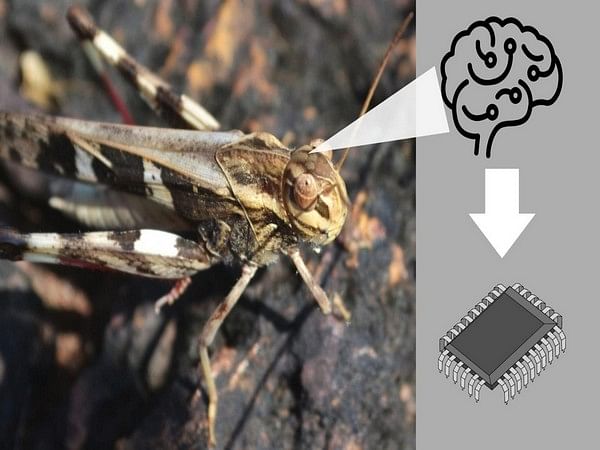New Delhi [India], April 22 (ANI): In a study, researchers have developed ultra-low power artificial neurons capable of obstacle detection by mimicking locust brains.
According to a study, the innovation, led by scientists from the Indian Institute of Technology Bombay (IIT Bombay) and King’s College London, United Kingdom, could revolutionize autonomous robotics and vehicle navigation.
The study, published in the journal Nature Electronics, showcases the design and construction of two-dimensional materials-based transistors, which have been utilized to create artificial neuron circuits.
These circuits closely mimic the spiking neuron model of biological neurons and are specifically designed for obstacle detection.
Motivated by the brain’s unique ability to process information efficiently, the researchers took inspiration from the behavior of a collision-detecting neuron found in locusts.
Known as the lobula giant movement detector (LGMD), this neuron plays a crucial role in helping locusts avoid collisions with objects in their path. The researchers aimed to replicate this mechanism in artificial neurons to achieve energy-efficient obstacle detection.
Explaining the rationale behind the research, Professor Saurabh Lodha from IIT Bombay stated “Unlike modern computers, the human brain consumes extremely low power for memory and computing. Hence, low power consumption is a key requirement for neuromorphic (modelled after the human brain) electronics.
He added, “2D materials are ideally suited for this purpose due to their atomically-thin nature that allows for excellent electrostatic control leading to low-power operation. Although conventional semiconductors such as silicon can be thinned down as well, they lose their performance dramatically at scaled thicknesses, unlike 2D materials”.
The newly developed artificial neuron circuit incorporates models of a subthreshold transistor built using a two-dimensional (2D) material channel. This transistor, carefully designed and fabricated, replicates the behavior of sodium channels in biological neurons while operating under a low-current regime to enhance energy efficiency.
Kartikey Thakar, the first author of the study, highlighted the challenges faced during the research, including achieving essential features and spike times to match the biological LGMD neuron response and minimizing total energy dissipation.
However, careful design of the 2D subthreshold transistor characteristics played a critical role in overcoming these challenges.
The results of the study demonstrated that the artificial neuron circuit accurately detects looming objects, signaling potential collisions, at an energy cost of less than 100 picojoules (pJ).
Moreover, the circuit distinguishes between looming and receding objects, providing a selective response to approaching threats in the direct collision path.
Prof. Bipin Rajendran from King’s College London emphasized the versatility of the spiking neuron circuit, stating that it could be utilized in various neuromorphic applications requiring low-energy spiking neurons beyond obstacle detection.
Looking ahead, Prof. Saurabh Lodha discussed the potential market implications, stating that the semiconductor industry has shown increasing interest in 2D materials for future transistor development.
The wider adoption of these materials will depend on solutions to technological challenges and their compatibility with existing technology platforms.
Overall, this research represents a significant advancement in the field of neuromorphic engineering and autonomous robotics.
The ultra-low power spiking neuron circuits developed in this study could greatly enhance obstacle detection and avoidance in real-world applications, paving the way for further exploration of advanced neuromorphic systems. (ANI)
This report is auto-generated from ANI news service. ThePrint holds no responsibility for its content.



